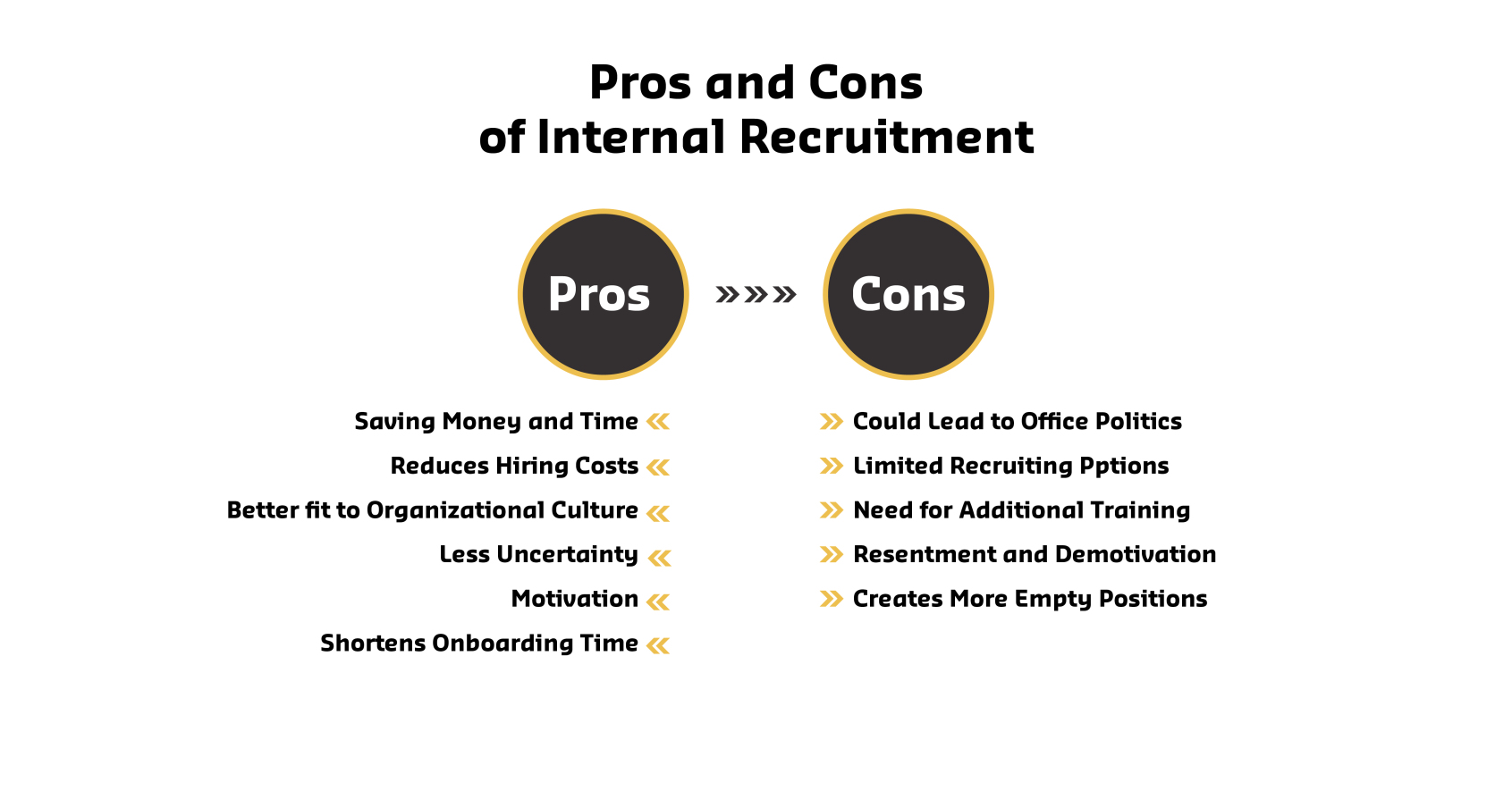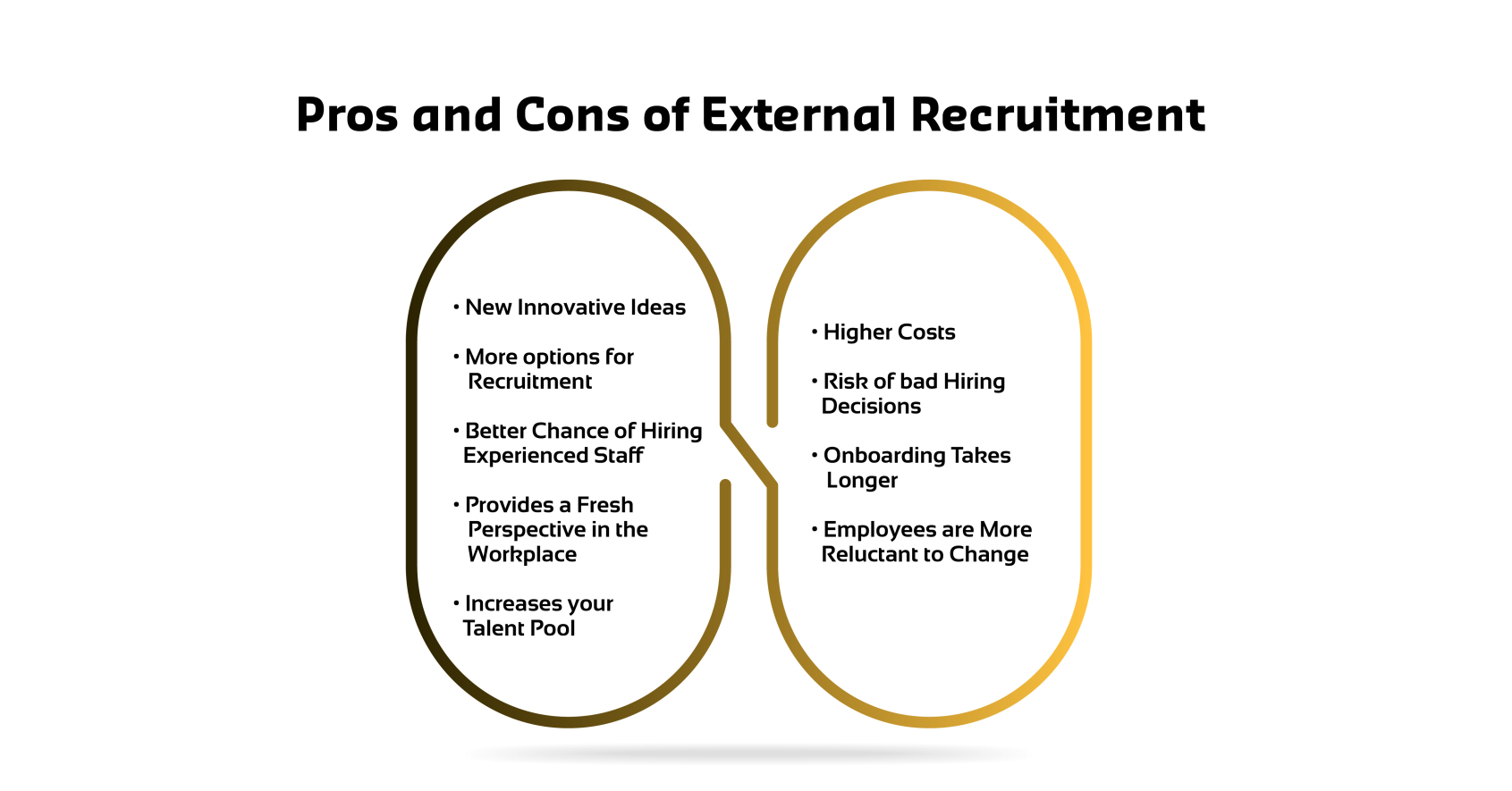Which Recruitment Method is More Effective: Internal or External?
March 14, 2024

The race for top talent is fiercer than ever before. So, what hiring strategy is optimal for your business?
From finding the right talent to the hiring process, the recruitment process is a challenge for all businesses and organizations. And not all organizations handle the recruitment process efficiently. Recruitment strategies require the utmost care, skills, attention, and investment of time and money. Hiring managers typically have only two options for their recruitment strategies– internal and external.
In this blog, we’ll explore the recruitment process and understand the pros and cons when it comes to both internal and external recruitment.
Understanding the Basis of Recruitment Strategies
In simple terms, you can understand recruitment strategies as tactics that are exercised to optimize the hiring process and cultivate a robust pool of potential candidates. However, how a company or organization approaches potential candidates depends on internal needs like company specifics and external factors like competition, business landscape, economy, and others. Recruitment is an essential part of an organization.
Generally, these strategies involve refining recruitment timelines, widening the candidate pool, and establishing a repository of applicants. Key components of the recruitment cycle include planning, crafting, executing, and integrating new hires. HR practitioners commonly utilize university outreach, diverse interview methodologies, advertising, online job postings, and leveraging social media channels to attract suitable candidates.
What are Internal and External Strategies?
Internal Recruitment is the process of sourcing talent from within an organization's existing pool of employees. Here, potential candidates are selected from the current employees or individuals, including former employees who left voluntarily and may wish to return. This recruitment approach may involve transferring employees between departments, promoting employees to higher positions, or rehiring former employees. Some common methods of internal recruitment include internal advertisements, promotions, transfers, rehiring of former employees, hiring of previous contract or part-time employees, and even retired employees.
External Recruitment is about selecting candidates from outside the organization by openly assessing candidates based on various criteria and bringing in new ideas for innovation. While it offers access to a broader talent pool and fresh perspectives, the process is often time-consuming and costly. Common external recruitment methods include campus recruitment, job portals, job fairs, employment exchanges, job consultancies, and advertisements on various media platforms.
Choosing Between Internal and External Recruitment
Choosing between internal and external recruitment is not a simple and breezy HR process but rather a significant and strategic approach for hiring managers and recruitment teams. Both internal and external recruitment offers distinct advantages and challenges.
Pros and Cons of Internal Recruitment

Pros
-
Saving Money and Time: Promoting existing employees eliminates the need for extensive candidate searches, interviews, and selection processes, resulting in cost and time savings.
-
Reduces Hiring Costs: Internal recruitment is cost-effective as it eliminates the need for external advertising and reduces the involvement of Human resources, thus saving time and budget.
-
Better Fit to Organizational Culture: Internal promotions ensure that employees are already familiar with the company's culture and work environment, facilitating a smoother transition into their new roles.
-
Less Uncertainty: Promoting employees who have demonstrated success in their current roles reduces the uncertainty associated with hiring new candidates, as their performance history within the organization provides a level of predictability.
-
Motivation: Establishing a policy of promotion based on performance motivates employees to work harder and strive for career advancement within the organization, leading to higher levels of motivation and retention.
-
Shortens Onboarding Time: Internal hires require less onboarding time since they are already familiar with the company's values and processes. This saves both time and costs associated with training.
Cons
-
Could Lead to Office Politics: Internal competition for promotions may create office politics, affecting morale and overall productivity.
-
Limited Recruiting Options: Internal recruitment restricts the pool of potential candidates to existing employees, limiting hiring options and potentially making it challenging to find the right fit for open positions.
-
Need for Additional Training: Promoted employees may require further training to acquire the necessary skills for their new roles, leading to additional time and resources spent on training initiatives.
-
Resentment and Demotivation: Employees who are not promoted despite feeling deserving of advancement may experience demotivation and resentment, leading to negative group dynamics and unhealthy competition within the workplace.
-
Creates More Empty Positions: Internal promotions result in vacant positions, which may lead to increased workload for existing staff and potentially impact efficiency and job satisfaction. Moreover, their promotions create vacancies that need to be filled externally, adding to recruitment costs.
Pros and Cons of External Recruitment

Pros
-
New Innovative Ideas: External recruitment brings in fresh perspectives and ideas from individuals outside the organization, fostering innovation and creativity within the company.
-
More Options for Recruitment: External hiring expands the pool of candidates, providing a wider range of skills and experiences to choose from, ultimately increasing the likelihood of finding the best fit for open positions.
-
Better Chance of Hiring Experienced Staff: External recruitment enables the hiring of candidates who bring prior experience and skills relevant to the role, reducing the need for extensive training and orientation.
-
Provides a Fresh Perspective in the Workplace: External hires bring new energy and diverse viewpoints, potentially improving innovation and identifying areas for improvement.
-
Increases your Talent Pool: External recruitment expands the candidate pool, offering access to a wider range of top talent through various job boards and platforms.
Cons
-
Higher Costs: External recruitment processes involve various expenses, including job postings, background checks, interviews, and selection procedures, leading to higher recruitment costs in terms of time, money, and resources.
-
Risk of Bad Hiring Decisions: Despite efforts to ensure fairness and objectivity in the recruitment process, there is always a risk of making poor hiring decisions due to biases or other factors, which can have negative consequences for the organization.
-
Onboarding Takes Longer: External hires require more time to integrate into the company culture and undergo specific role training, potentially prolonging the onboarding process.
-
Employees are More Reluctant to Change: Existing employees may feel resentful towards external hires, affecting motivation and willingness to adapt to company goals.
Determining which approach to prioritize depends on various factors. Internal recruitment is often favored during stable periods when continuity and leveraging existing resources are paramount. It's particularly beneficial when the organization lacks the capacity to train new hires or when there's a strong cultural alignment with current employees. External recruitment, however, becomes advantageous when the company has robust onboarding processes in place and seeks to infuse new skills and expertise into its workforce. Making it suitable for expanding into new markets, industries, or geographic regions.
End Note
A balanced recruitment strategy typically combines both internal and external approaches. You need to tailor these approaches to the specific needs and goals of the organization. It necessitates a thorough evaluation of the role, its requirements, and a deep understanding of your company's trajectory to identify the most suitable candidates and ensure long-term success.


